Student engagement in higher education stands as one of the most critical indicators of student success, retention, and career preparedness. Studies consistently show that students who are actively engaged in their academic journey are not only more likely to complete their degrees but also more likely to utilise campus resources and form lasting connections with their institution. This enhanced sense of belonging significantly contributes to higher retention rates, stronger academic performance, and greater career readiness after graduation.
Table Of Contents
- 1What is Student Engagement?
- 2Strategies for Increasing Student Engagement in Higher Education
- 3Types & Examples of Student Engagement in Higher Education
- 4Top 10 Student Engagement Tools
- 5Why Student Engagement Tools Matter?
- 6Student Engagement During the Enrollment Cycle
- 7Student Engagement After the Enrollment Cycle
- 8Results of Strong Student Engagement
- 9Essential Things to Remember When Choosing Student Engagement Tools
- 10Conclusion
To truly support today’s digitally native learners, institutions must evolve beyond traditional engagement methods. Modern students expect more—personalised learning experiences, on-demand academic support, and interactive, tech-enabled environments. This is where tools like student engagement software, adaptive learning platforms, and flexible course delivery options become game-changers. These innovations enable colleges and universities to build learning ecosystems that are student-centred, data-informed, and outcome-driven—ensuring every student not only survives but thrives.
What is Student Engagement?
Student engagement refers to the degree of attention, curiosity, interest, optimism, and passion that students show when they are learning or being taught. It goes beyond mere attendance or compliance—it’s about how emotionally, behaviorally, and cognitively invested students are in their academic experience.
In the context of higher education, student engagement reflects how involved and connected students feel with their institution—both within the classroom (e.g., participating in discussions, completing assignments, utilising learning platforms) and outside (e.g., joining clubs, attending events, utilising support services).
Strategies for Increasing Student Engagement in Higher Education
In today’s fast-evolving academic landscape, simply delivering lectures or uploading assignments isn’t enough. Students—especially those in Gen Z and Gen Alpha—crave interactivity, relevance, and meaningful connections. With rising competition and retention challenges, institutions are reevaluating their approach to student engagement. According to the Chronicle of Higher Education, institutions that prioritise engagement strategies see 20–25% higher retention rates. Engagement isn’t just about participation—it’s about creating a campus culture where students feel seen, heard, and inspired to learn.
Below are some practical, research-backed strategies to boost student engagement in higher education:
1. Use Interactive Technology Tools
Interactive tools make lectures dynamic and engaging by involving students in real-time activities like quizzes, polls, and discussions.
- Platforms like Mentimeter, Top Hat, Kahoot, and Nearpod allow professors to turn passive lectures into interactive sessions.
- These tools support instant feedback, word clouds, and gamified learning experiences, which keep students actively involved.
- Example: The University of Central Florida adopted Top Hat, leading to a 15% increase in class attendance and engagement.
2. Promote Active Learning Techniques
Active learning encourages students to engage with the material, not just listen.
- Methods like flipped classrooms, problem-based learning, and case studies put the responsibility of learning on the students while the instructor acts as a facilitator.
- These approaches foster critical thinking and real-world problem-solving skills.
- According to a Harvard study, active learning improves performance in STEM courses by up to 30%.
3. Personalize Learning Paths
Every student learns differently—so personalised education can make a big difference.
- Tools like Canvas Mastery Paths, Blackboard Ultra, and Coursera for Campus allow for adaptive learning, where content adjusts based on student performance.
- This approach ensures struggling students get extra help, while advanced learners are challenged appropriately.
- Students are more engaged when learning fits their pace, interest, and needs.
4. Foster Faculty-Student Relationships
Strong student-faculty relationships directly impact student motivation and retention.
- Professors who hold virtual office hours, provide consistent feedback, and mentor students help build a sense of trust and belonging.
- A Gallup study found that students who had a mentor during college were twice as likely to be engaged at work and more likely to succeed in life.
5. Support Peer Collaboration
Peer interaction fosters a sense of community and improves learning outcomes.
- Encouraging peer-led study groups, online discussion forums, and group projects builds collaboration skills and emotional connection.
- Digital platforms like Slack, Microsoft Teams, or built-in tools in LMSs like Canvas Discussions facilitate this kind of engagement.
6. Enhance Campus Involvement
Engagement doesn’t stop in the classroom.
- Students who participate in clubs, leadership programs, volunteer activities, and campus events are more connected to their institutions.
- Research shows that involved students develop better social skills, leadership abilities, and feel more satisfied with their college experience.
7. Monitor Engagement with Analytics
Real-time tracking helps identify disengaged students before it’s too late.
- Tools like Canvas Analytics, Blackboard Retention Centre, and Brightspace Insights allow instructors and advisors to monitor login frequency, assignment submissions, discussion participation, and more.
- Based on this data, universities can intervene with personal outreach, academic counselling, or support resources.
Types & Examples of Student Engagement in Higher Education
Student engagement refers to the extent to which students are actively and meaningfully involved in their learning experience—emotionally, cognitively, and behaviorally. It’s not just about showing up to class; it’s about how deeply students connect with their coursework, peers, faculty, and institution.
Engaged students are more likely to perform better academically, persist through graduation, and develop critical thinking and career-ready skills. According to the National Survey of Student Engagement (NSSE), higher levels of engagement are positively correlated with better GPA, improved retention, and increased student satisfaction.
1. Behavioural Engagement
This involves the actions students take—attending classes, submitting assignments, participating in discussions, and following university policies.
Examples:
- Regular class attendance.
- Active participation in polls or quizzes on platforms like Top Hat or Mentimeter.
- Completing tasks on LMS platforms such as Canvas or Blackboard.
2. Emotional Engagement
This focuses on students’ emotional responses—do they feel connected, valued, and supported in their academic environment?
Examples:
- Feeling a sense of belonging on campus.
- Forming positive relationships with faculty or peers.
- Participation in mental wellness programs or student clubs.
3. Cognitive Engagement
Cognitive engagement refers to the intellectual effort students invest in understanding complex ideas, solving problems, and applying what they learn.
Examples:
- Participating in research projects or case studies.
- Taking part in flipped classrooms or critical debates.
- Using adaptive learning platforms like Coursera, EdX, or Mastery Paths in Canvas.
4. Social Engagement
This involves how students interact with the campus community beyond academics.
Examples:
- Joining student organisations, cultural clubs, or sports teams.
- Participating in volunteer programs or leadership councils.
- Attending networking events or career fairs.
5. Digital Engagement
With hybrid and online learning on the rise, digital engagement reflects how effectively students interact with online content, tools, and platforms.
Examples:
- Watching video lectures, completing modules online.
- Contributing to online forums and peer chats.
- Using engagement tools like Yellowdig or Padlet.
Read more: Knowledge Source
Top 10 Student Engagement Tools
In the digital age, student engagement tools are transforming how colleges and universities connect with learners. These platforms are designed to create interactive, personalised, and meaningful academic experiences both inside and outside the classroom. From real-time polls to gamified quizzes and social learning platforms, institutions are using these tools to drive better participation, retention, and academic success.
According to EDUCAUSE 2024, over 75% of higher education institutions are actively investing in engagement platforms to boost student interaction and outcomes.
1. Top Hat
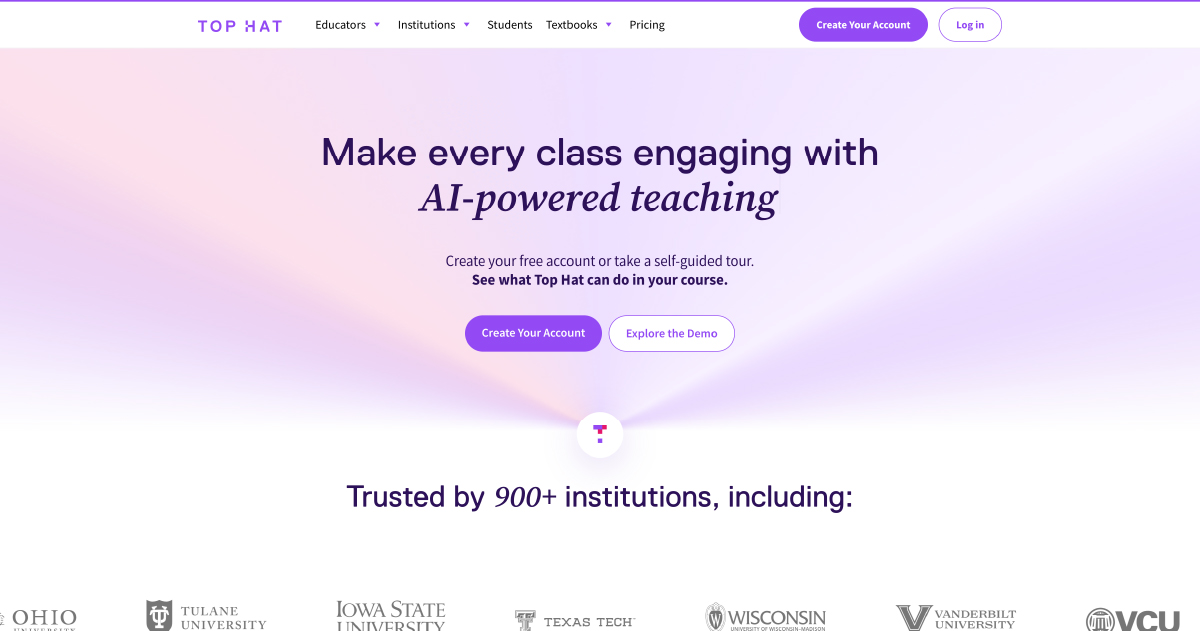
Top Hat is a cloud-based teaching platform that turns lectures into interactive experiences through polls, quizzes, and live discussions.
Used in real-time during in-person or remote classes, Top Hat increases classroom participation by integrating mobile devices and laptops into the learning process.
Features:
- Live polls and quizzes
- Discussion boards and attendance tracking
- Integration with LMS (Canvas, Blackboard)
- Auto-graded homework and exams
Pros:
- Easy to use for both students and professors
- High engagement in large lecture halls
Cons:
- Some features are locked behind paywalls
- Requires consistent internet access
Pricing:
Starts at $30/student per semester (institutional pricing available)
2. Yellowdig
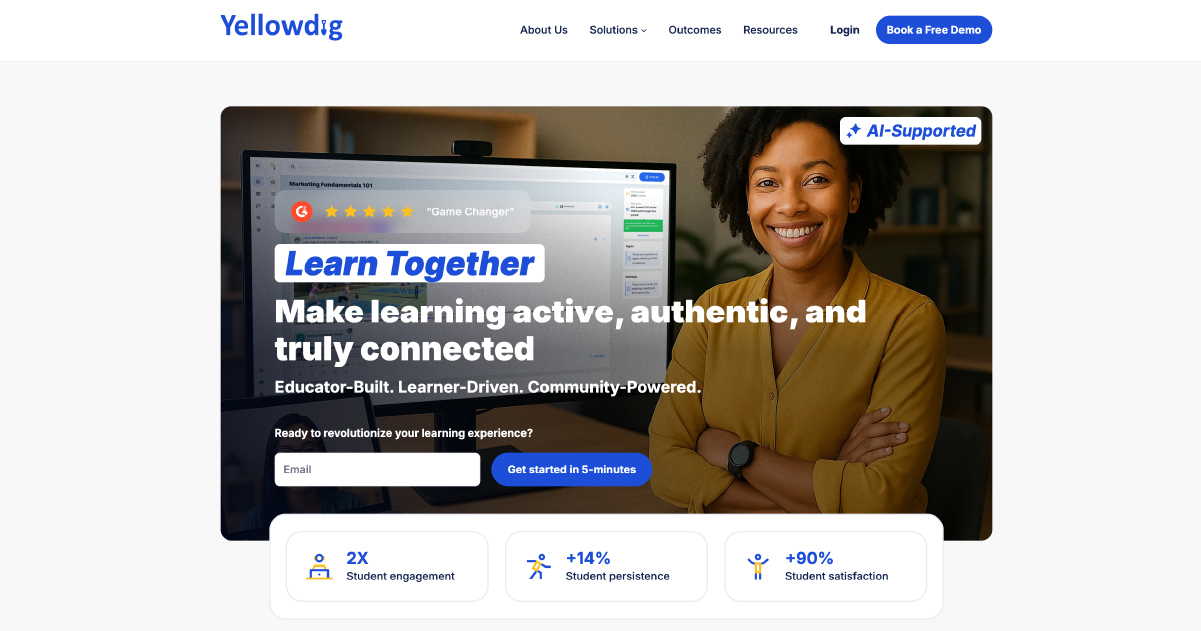
Yellowdig is a social learning platform that uses community-based discussions to increase student engagement and peer-to-peer learning.
It encourages students to create and engage in conversations around course topics, like a private academic social media platform.
Features:
- Points-based gamification
- Tagging, media sharing, and notifications
- Auto-sync with LMS
- AI-powered insights
Pros:
- Promotes meaningful engagement and peer bonding
- Increases time spent discussing coursework
Cons:
- Less structured than traditional forums
- Takes time to train faculty
Pricing:
Institutional pricing only (custom quote).
3. Mentimeter

Mentimeter is a real-time polling and presentation tool that boosts participation during lectures, webinars, and workshops.
Students can respond to polls, quizzes, or word clouds using their phones while viewing real-time results on screen.
Features:
- Live polls, word clouds, and Q&A sessions
- Integration with PowerPoint and Zoom
- Analytics dashboard
Pros:
- Visually engaging
- Easy to use with any class size
Cons:
- Limited free version
- Requires preparation before class
Pricing:
Free plan available. Paid plans start at $11.99/month.
4. Kahoot!
Kahoot! is a game-based learning platform used to deliver fun, competitive quizzes and review activities.
Students compete in real-time via their devices, making it ideal for icebreakers, quizzes, and review sessions.
Features:
- Game-based quizzes
- Reports and analytics
- Student-led “Kahoot! challenges”
- Integrations with MS Teams and Zoom
Pros:
- Extremely fun and engaging
- Great for formative assessment
Cons:
- Less depth for complex topics
- It can be time-consuming to create custom content
Pricing:
Free basic version. EDU Pro starts at $6/month.
5. Nearpod
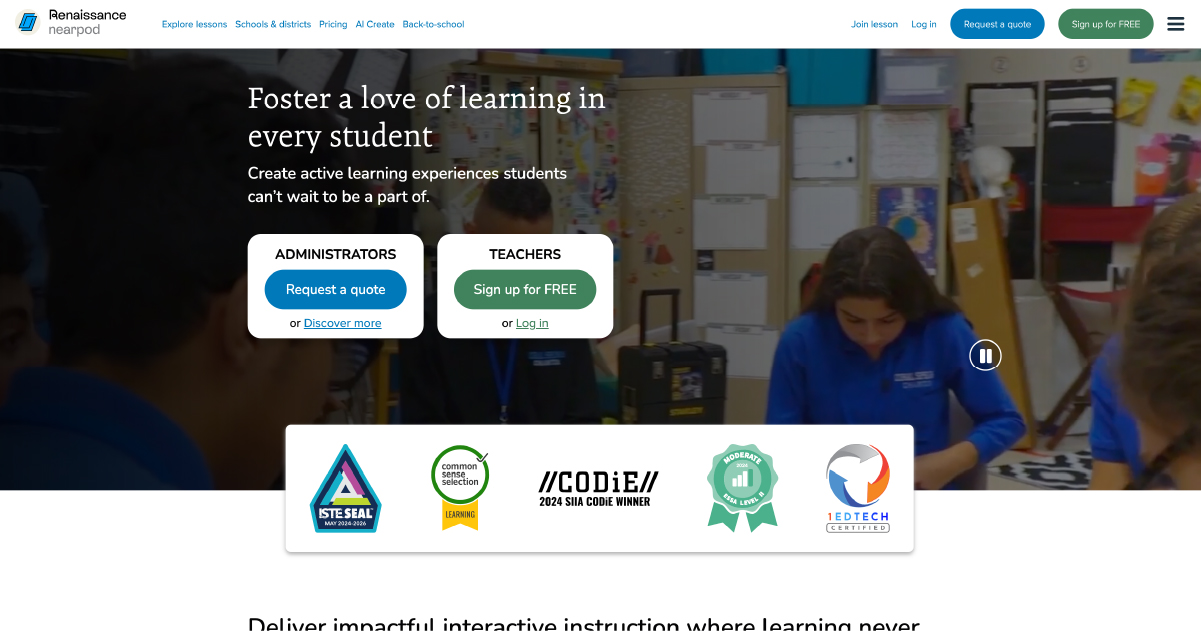
Nearpod combines presentations, assessments, and real-time interactivity into a single platform for in-person or remote learning.
Teachers can deliver multimedia lessons with live participation, quizzes, and virtual reality.
Features:
- Interactive video lessons
- Gamified quizzes and polls
- Drag-and-drop activities
- VR field trips
Pros:
- Great content library
- Works well for hybrid learning
Cons:
- Can be bandwidth-heavy
- The interface may feel complex at first
Pricing:
Free basic plan. Premium plans start at $159/year per teacher.
6. Padlet
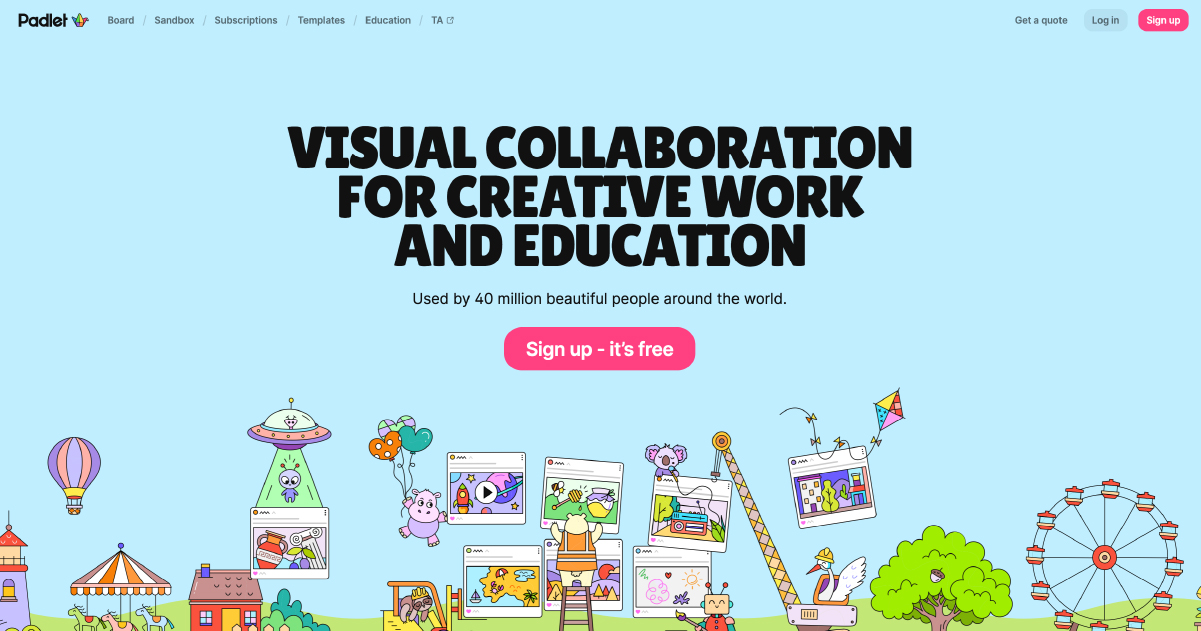
Padlet is a collaborative digital board where students can post notes, images, videos, and links.
Used as a brainstorming tool, it helps students share ideas and feedback in a visual, organised way.
Features:
- Multiple board templates
- Rich media uploads
- Collaboration and commenting
Pros:
- Intuitive, visual interface
- Great for group projects
Cons:
- Can become cluttered with large classes
- Limited features on the free plan
Pricing:
Free plan available. Paid starts at $8/month.
7. Piazza

Piazza is a Q&A platform tailored for STEM and academic discussion in university-level courses.
It allows anonymous student questions and collaborative answering by peers or instructors.
Features:
- Wiki-style collaborative responses
- Anonymous posting
- Instructor endorsements
Pros:
- Highly organised for technical subjects
- Encourages student-led support
Cons:
- More popular with STEM; less engaging for humanities
- The interface feels outdated
Pricing:
Free for students and instructors. Premium analytics for institutions.
8. Poll Everywhere
Poll Everywhere is a live polling and feedback tool used during lectures, conferences, and webinars.
It enables instructors to get instant feedback or check understanding mid-session.
Features:
- Live polls, open-ended questions, and clickable images
- LMS integration
- Reports and analytics
Pros:
- Smooth integration with PowerPoint and Keynote
- Effective for large lectures
Cons:
- Custom branding only on higher plans
- The free version has audience size limits
Pricing:
Free for up to 25 responses. Paid plans start at $120/year.
9. ClassDojo (for First-Year & Bridge Programs)
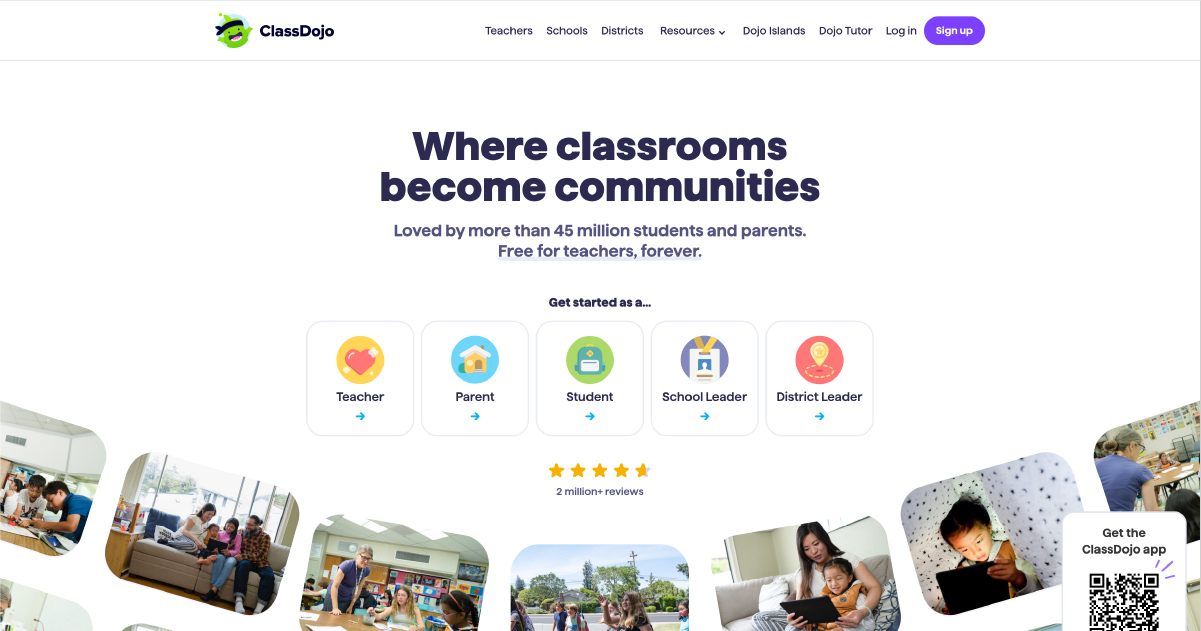
Although initially designed for K–12, ClassDojo is also used in higher education orientation and mentorship programs to build community.
It encourages consistent communication and rewards behaviours like participation and teamwork.
Features:
- Feedback points
- Messaging and announcements
- Portfolio tracking
Pros:
- Builds classroom community
- Ideal for freshman or bridging cohorts
Cons:
- Limited scope for advanced learners
- Not suitable for academic content delivery
Pricing:
Free core features. School plans are available upon request.
10. Duolingo
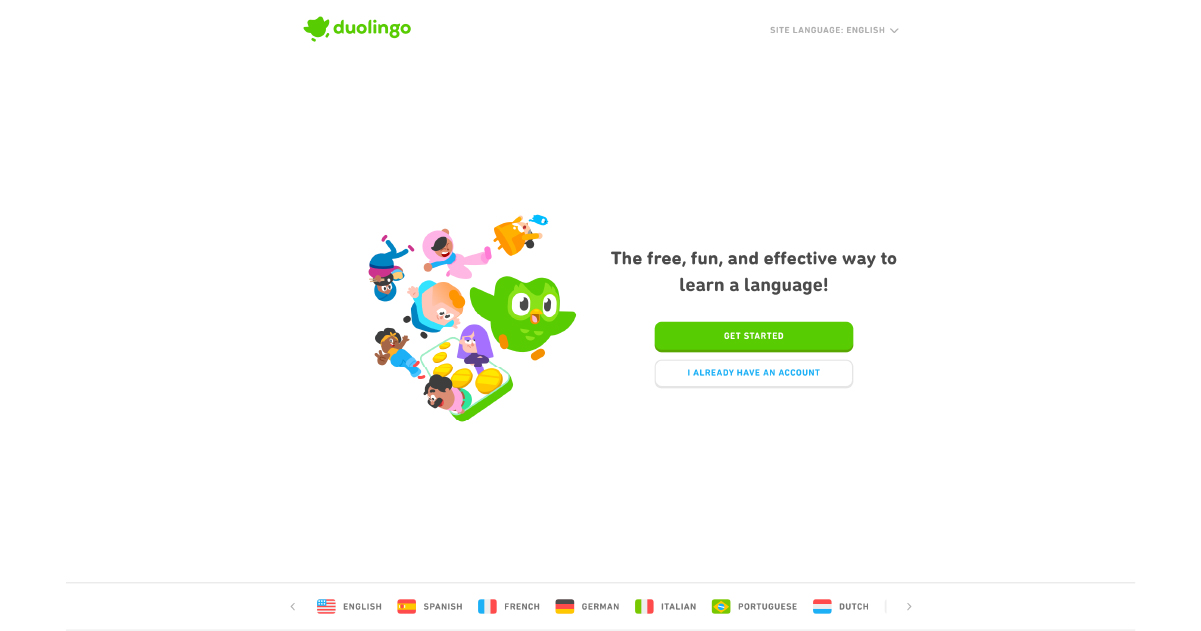
Instructors can monitor students’ language-learning progress inside Duolingo for Schools.
Duolingo uses gamification and quizzes to teach students how to read, write, listen, and speak in another language. The Duolingo for Schools program allows instructors to monitor student progress against the American Council on the Teaching of Foreign Languages (ACTFL) and the Common European Framework of Reference for Languages (CEFR) learning standards.
Top features:
- Regular curriculum updates: Duolingo uses machine learning-based research to keep content fresh and relevant.
- Personalised learning: The app uses artificial intelligence (AI) to recommend follow-up learning modules.
- Progress insights: Educators can see how each student progresses using features like accuracy and time spent learning.
Pros:
- User-friendly app
- Gamification features like daily streak and competitions
Cons:
- Frequent curriculum updates can become disruptive
Pricing:
- Free for students and schools
Why Student Engagement Tools Matter?
In an era where student attention is divided among devices, platforms, and responsibilities, traditional teaching methods often fall short in capturing interest and driving meaningful learning. This is where student engagement tools come in. These platforms are designed to make learning more interactive, personalised, and connected—both in physical classrooms and online environments.
1. Boosts Active Participation
Engagement tools like Kahoot, Top Hat, and Nearpod facilitate active participation by converting passive listening into interactive experiences through live polls, quizzes, and discussions. This real-time interactivity increases student focus and improves knowledge retention.
2. Supports Diverse Learning Styles
Every student learns differently. Tools like video-based Flip (for visual/auditory learners) or Padlet (for collaborative thinkers) cater to varied preferences, ensuring inclusivity and accessibility.
3. Enhances Feedback and Assessment
Platforms like Poll Everywhere or Yellowdig offer instant feedback, which helps faculty track understanding and identify struggling students early—leading to timely interventions.
4. Fosters Connection and Belonging
Emotional engagement is critical. Community-building tools like Yellowdig and ClassDojo help students feel more connected to peers and instructors, improving motivation and morale.
5. Increases Retention and Completion Rates
Research indicates that students who are engaged are significantly more likely to remain enrolled. Interactive tools drive better engagement, which directly contributes to higher retention and graduation rates.
6. Enables Data-Driven Decisions
Most engagement platforms provide analytics on participation, content interaction, and student behaviour—helping institutions make informed decisions to improve teaching strategies.
7. Student Engagement During and After the Enrollment
Student engagement isn’t a one-size-fits-all concept—it evolves at each stage of the student lifecycle. What counts as “engagement” during the admissions process is very different from what engagement looks like in the classroom or during a student’s final year. Institutions must align engagement strategies with each phase of the journey to ensure students feel supported, connected, and successful from first inquiry to post-graduation.
Student Engagement During the Enrollment Cycle
1. Personalised Communication
First impressions are powerful. If your communication feels generic, students will quickly tune out.
Personalised emails, messages, and responses make prospective students feel seen and valued. Using CRM tools, institutions can segment students based on interests (e.g., program choice, location, hobbies) and craft tailored content. For example, sending an email series to a student interested in engineering with alumni stories from the engineering department is much more effective than a generic university promotion.
Example: Butler University uses dynamic email content that changes based on a student’s declared major and interests, boosting click-through rates and enrollment confirmations.
2. Virtual Campus Tours and Webinars
In the digital age, students expect to explore from anywhere.
Many students can’t visit campuses physically. Offering 360° virtual tours, student-led live sessions, or interactive webinars creates an immersive pre-enrollment experience. It builds emotional connection and answers practical questions.
Example: Arizona State University’s virtual tour allows students to explore dorms, labs, and even hangout spots, creating a sense of familiarity before arriving.
3. Application Support and Reminders
The application journey can feel confusing, especially for first-gen or international students.
Timely nudges through email or SMS help students stay on track. Institutions that provide checklists, live Q&A sessions, and personal counsellors experience higher application completion rates. Automation helps scale this without losing the personal touch.
Example: Georgia State University utilises AI chatbots to assist students in submitting documents, answering application FAQs, and reminding them of deadlines—resulting in a significant reduction in summer melt.
4. Social Media and Online Community Building
Today’s students want to see your culture before they join.
Platforms like Instagram, TikTok, and Discord give a peek into real student life. Institutions use reels, student takeovers, and live AMAs to showcase diversity, campus life, and events. Creating pre-enrollment groups (e.g., WhatsApp, Discord) helps students connect with peers, which builds excitement and commitment.
Example: The University of Michigan utilises student influencers on TikTok to showcase “a day in the life” content, which has generated significant student interest and engagement.
5. CRM-Driven Journey Mapping
Every student’s path is different—your system should reflect that.
Using CRMs like Slate, Salesforce, or HubSpot allows institutions to automate personalised student journeys based on actions. For instance, if a student opens an email about financial aid, the system can follow up with scholarship opportunities or webinars related to funding.
Example: The University of Notre Dame utilises Slate CRM to create student-specific communication flows that enhance yield by delivering the right content at the right time.
Read more: Salesforce for Higher Education: Benefits, Drawbacks, and How to Use It Effectively
Student Engagement After the Enrollment Cycle
1. Onboarding and Orientation Programs
The first few weeks can make or break a student’s experience.
New students need help understanding how things work. Interactive orientation programs, digital welcome guides, campus scavenger hunts, and mentorship pairings help students settle in quickly and confidently. An engaging onboarding reduces anxiety and fosters early connection.
Example: Purdue University’s Boiler Gold Rush onboarding program combines gamified orientation with upperclassmen mentors to ensure students feel welcomed and included.
2. Academic Advising and Career Services
Engagement increases when students can see the path to success.
Regular academic advising sessions help students stay aligned with their goals, avoid unnecessary credits, and graduate on time. Career services that provide resume workshops, internships, and employer meetups give students a clear return on investment, keeping them motivated and engaged throughout.
Example: Northeastern University integrates career coaching and co-op programs from year one, ensuring high job placement rates and strong student engagement.
3. Clubs, Events, and Extracurriculars
Students want more than just academics—they want a community.
Institutions should actively promote clubs, student government, cultural events, and leadership programs. These activities provide social outlets, build soft skills, and help students feel like part of something bigger.
Example: UCLA’s “True Bruin Welcome Week” highlights hundreds of student clubs and activities in a fun, festival-style format, increasing early involvement and satisfaction.
4. Learning Management System (LMS) Integration
A smooth digital experience boosts academic confidence and reduces dropout.
A robust LMS (like Canvas, Blackboard, or Moodle) helps students track assignments, grades, and resources. When integrated with mobile apps, push notifications, and calendars, it helps students stay on top of their workload, promoting active participation.
Example: The University of Central Florida’s use of Canvas mobile integrations saw a 30% rise in student engagement in online discussions and assignment submissions.
5. Ongoing Feedback and Surveys
Students want to know that their voice matters.
Regular pulse surveys, course evaluations, and open forums allow students to share feedback about their academic and campus life. When universities act on this feedback and communicate changes, it fosters trust and long-term engagement.
Example: The University of British Columbia conducts mid-semester feedback surveys and has a “You Said, We Did” campaign to show how feedback leads to real changes.
Read more: Enrollment Tools: Best Student Enrollment Management Software & Systems
Results of Strong Student Engagement
When institutions prioritise student engagement during recruitment and enrollment, the benefits don’t end there—they extend well into the classroom and beyond. Schools that create early positive experiences often see those same students thrive academically, remain enrolled, and complete their degrees.
As noted by the Centre for Community College Student Engagement (CCCSE), “Student learning, persistence, and attainment in college are strongly associated with student engagement. The more actively engaged students are—with college faculty and staff, with other students, with the subject matter they are studying—the more likely they are to persist in their college studies and to achieve at higher levels.”
This quote reinforces a crucial idea: engagement is not just a tactic—it’s a foundation. The relationships, personalisation, and support built during the early stages of the student journey often carry forward, helping students stay focused, motivated, and confident throughout their college experience.
1. Higher Retention & Persistence Rates
Engaged students are far more likely to stay enrolled and progress through their academic journey. Activities like event participation, volunteering, and peer connection have a direct impact on student persistence.
- At Harford Community College, students who attended events were 53.7% more likely to persist to the following year.
- Arkansas Tech University–first-year students who volunteered at least one hour saw a 94% retention rate, vs. 72% for non‑volunteers (a 22 percentage‑point difference).
2. Improved Academic Performance
Active engagement contributes to better learning outcomes, higher GPAs, and stronger class participation. Students who feel connected tend to be more motivated academically.
- Active learning in STEM: failure rates dropped from 32% to 21%, with performance gains of 0.47 standard deviations compared to traditional lectures.
- Purdue University reported that club members had GPAs 0.11 points higher, and officers averaged 0.22 points higher.
3. Increased Graduation Rates
Engagement initiatives help students reach the finish line faster and more consistently. Institutions that focus on student-centred support services see a sharp rise in graduation stats.
- At Texas Tech University, staff and student support investments (e.g. Raider Success Hub) increased the 4-year graduation rate to 51% (a 50% 10-year gain) and the 6‑year rate to 69% (a 10‑percentage‑point improvement).
- Georgia State’s interventions resulted in 3,500 more graduates annually, particularly among underserved populations.
4. Greater Sense of Belonging and Well-being
Engagement fosters an emotional connection to the institution, enhancing mental health, inclusion, and overall satisfaction. Students who feel they belong are more likely to succeed academically and socially.
- At Ohio State, engaged students were 2.6 times more likely to feel part of the community and 2.1 times more likely to receive job offers.
- CliftonStrengths participants were 1.9 times more likely to graduate within 4 years.
5. Better Career Readiness
Involvement in clubs, mentoring, and career centres significantly improves job outcomes. Students who engage early on are better prepared for life after graduation.
- Students who are highly active on campus were rated 18% more career-ready by employers.
- Engagement correlated directly with graduate school planning and professional development.
6. Higher LMS & Digital Engagement
A strong digital experience supports engagement beyond the classroom. Integrated tools like LMS, mobile apps, and discussion boards enhance interaction and learning.
- University of Central Florida’s Canvas LMS led to a 30% increase in participation.
- Feedback tools and discussion platforms have improved content completion by 60% or more.
7. Impact of Gamification & Active Learning
Game-based elements and interactive methods fuel student motivation and class attendance. These approaches are proven to increase focus, participation, and retention.
- Gamification improved engagement by 30–65%, and the use of active techniques in physics doubled learning gains.
- Collaborative group work has been shown to increase retention by 20–25%.
Essential Things to Remember When Choosing Student Engagement Tools
In today’s student-first education model, simply delivering information isn’t enough—engagement is what truly drives success. Whether it’s through personalised communication, mobile alerts, or interactive dashboards, the right tools can help institutions foster real connections with students at every stage of their journey. But with a growing marketplace full of platforms claiming to boost engagement, it’s essential to choose wisely. The right tool should not only support your goals but also enhance the overall student experience in a measurable, sustainable way.
1. Integration with Existing Systems
Ensure the tool integrates seamlessly with your existing systems, such as your student information system (SIS), learning platform (like Canvas), or CRM. This saves time and avoids technical issues.
2. Ease of Use for Students and Staff
- If it’s hard to use, students won’t engage, and staff won’t implement it effectively.
- Choose tools with an intuitive interface, mobile access, and minimal training requirements. User-friendly dashboards and self-service features increase adoption rates across the board.
3. Personalisation & Automation Capabilities
- Students want to feel seen, not spammed.
- Select tools that allow personalised messaging, targeted content, and automated workflows based on user behaviour. For example, sending a welcome message based on a student’s major or nudging for event attendance based on past interests.
4. Real-Time Analytics and Reporting
- You can’t improve what you don’t measure.
- Look for platforms that offer detailed, real-time insights into engagement levels—like which events students are attending, what content they’re interacting with, and where drop-offs are happening. These insights drive smarter decisions.
5. Mobile Accessibility
- Students live on their phones.
- Ensure the engagement tool has a responsive mobile interface or a dedicated app. Features like push notifications, chat access, and mobile-friendly surveys are essential for reaching Gen Z.
6. Support for Multiple Engagement Channels
- Students engage differently—some respond to texts, others to emails, app alerts, or live chats.
- The best tools allow multi-channel engagement, including email, SMS, mobile push, web chat, and even social media integrations. This ensures your message reaches students wherever they are.
7. Scalability and Customisation
- What works for 500 students may not work for 5,000.
- Choose a platform that can grow with your institution and be customised for different departments or student groups. Custom workflows, branding options, and segmentation features are a must.
8. Student Feedback and Interaction Options
- Engagement is a two-way street.
- Select tools that let students respond, give feedback, book meetings, or register for events directly through the platform. Tools that support polls, surveys, and open-text feedback can dramatically boost student voice.
9. Security and Data Compliance
- You’re handling sensitive student data.
- Make sure the tool is compliant with FERPA, GDPR, or other relevant data protection laws. Look for platforms that offer encryption, role-based access, and secure cloud storage.
10. Proven Results and Client Success Stories
- You want tools that actually work—not just flashy promises.
- Check for case studies, testimonials, or real-world success metrics from other institutions. If the platform improved retention or engagement elsewhere, it’s more likely to succeed for you too.
Conclusion
In today’s hyper-digital world, student engagement is the secret sauce behind higher grades, stronger retention, and career-ready graduates. It’s more than just logging into class—it’s about students feeling connected, motivated, and involved every step of the way. Studies show that engaged students are 25% more likely to stay enrolled and perform better academically. Top universities like Georgia State and Purdue are using smart tech—AI advising, real-time polls, gamified quizzes—to boost engagement and results. Platforms like Top Hat, Kahoot, and Yellowdig are turning boring lectures into interactive experiences. And the payoff? Higher GPAs, graduation rates, job readiness, and even student happiness. With over 75% of institutions investing in engagement tools, it’s clear: if you want students to succeed, you’ve got to make them feel like they belong. Engagement isn’t just a strategy—it’s a game-changer. The future of education isn’t passive—it’s personal, digital, and deeply connected.





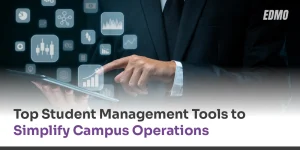


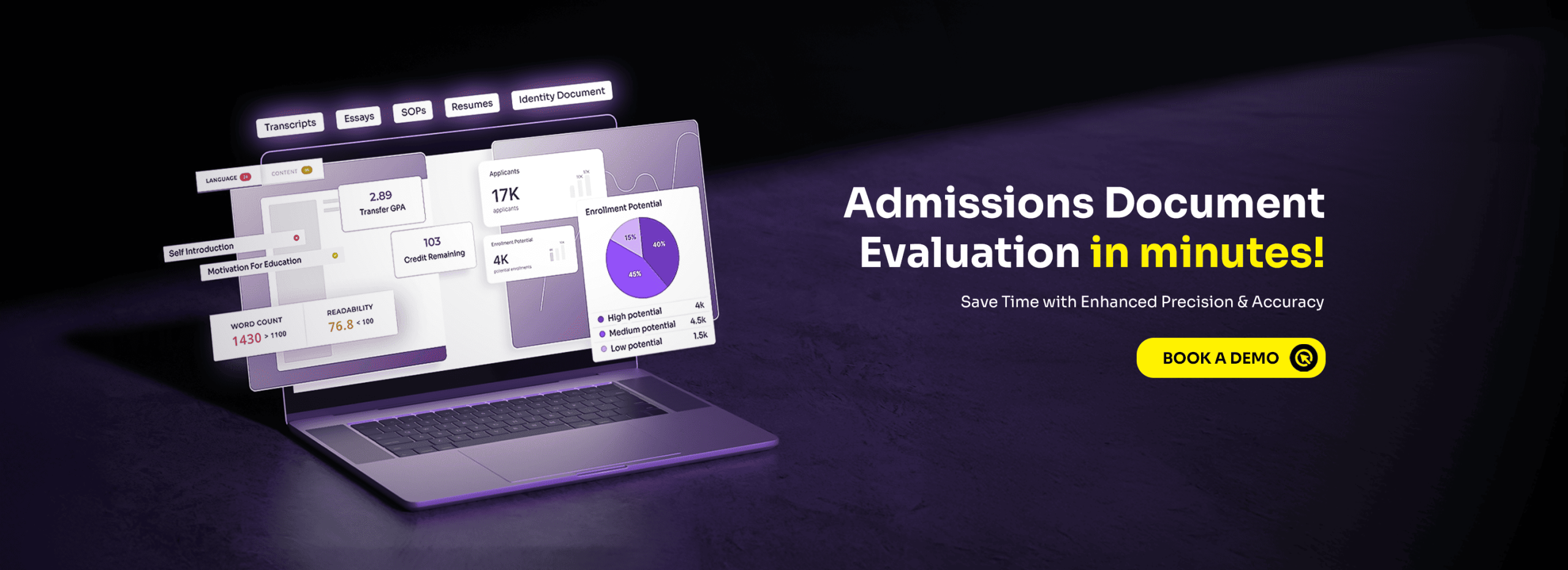

No comments yet. Be the first to comment!
Leave a Comment